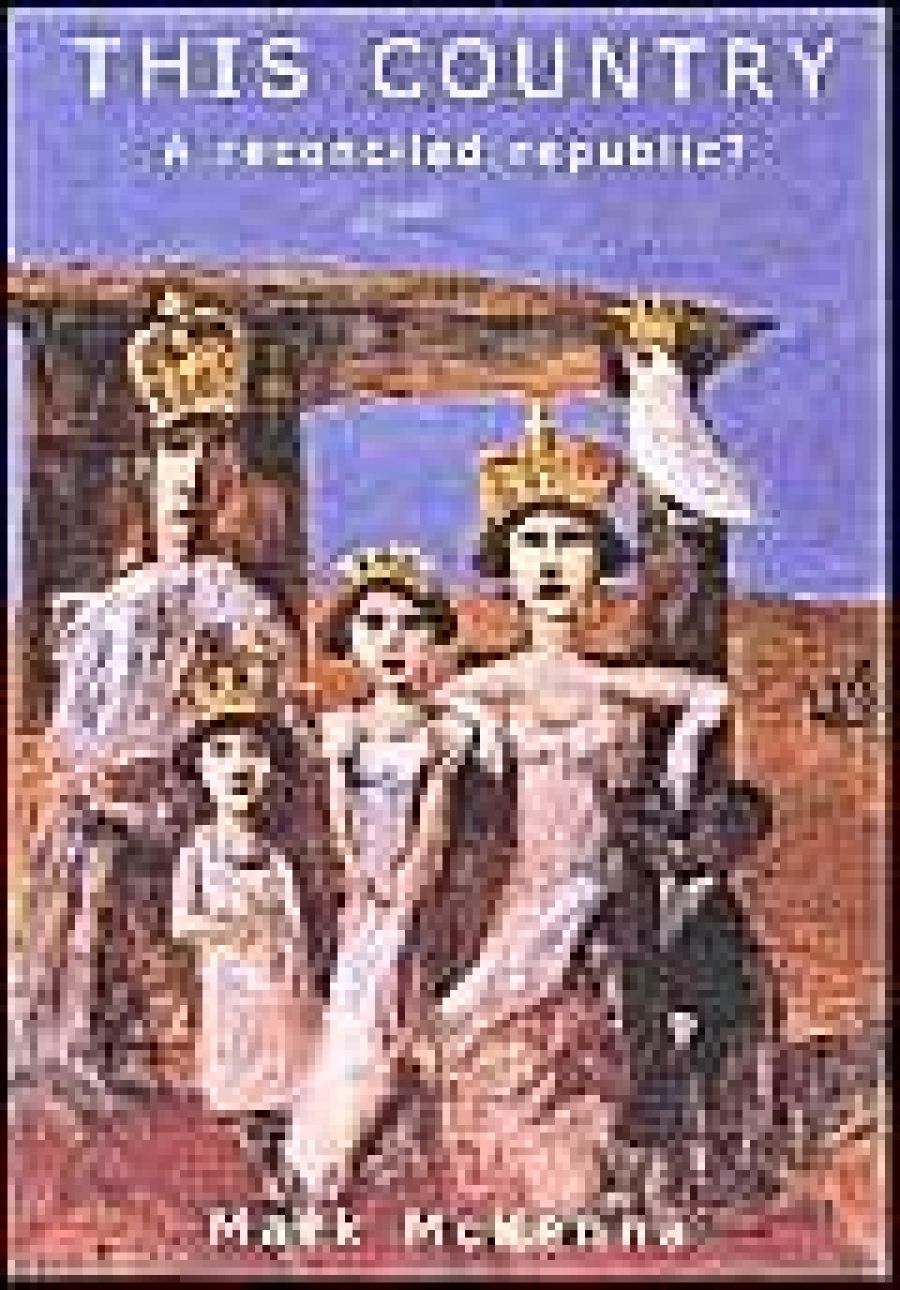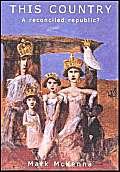
- Free Article: No
- Contents Category: Politics
- Review Article: Yes
- Article Title: Unfinished Business
- Online Only: No
- Custom Highlight Text:
Vote ‘No’, some republicans said at the 1999 republican referendum, and then we will work towards a republic that is a better one than the one being put forward. When the referendum failed, many of those republicans disappeared, and the movement lost momentum. Others who campaigned hard for a Yes vote have continued to push the republican agenda along. A similar group of tenacious Australians is undeterred by the federal government’s sidelining of the reconciliation process. Since joining Australians for Native Title and Reconciliation or their local reconciliation groups, they have maintained the commitment to social justice for indigenous people that they demonstrated when they walked across the bridge or signed the ‘Sorry books’.
- Book 1 Title: This Country
- Book 1 Subtitle: A reconciled republic?
- Book 1 Biblio: University of New South Wales Press, $29.95 pb, 160 pp
- Book 1 Cover Small (400 x 600):

- Book 1 Cover (800 x 1200):

Mark McKenna, a staunch republican, is one of those Australians. It is perhaps not surprising that he chose to follow his award-winning Looking for Blackfellas Point: An Australian History of Place (2002) with a book that is still very much about place, identity, and belonging. McKenna ‘s new book explores the two issues in his title – reconciliation and the republic – and their symbiotic but often antagonistic relationship to each other. In This Country: A Reconciled Republic?, McKenna explains why he believed the republic referendum failed and, learning from the mistakes of that failure, posits a way in which Australia can become a republic.
McKenna believes that the republic debate failed because it did not excite the hearts or minds of enough Australians and that this inability to win support stemmed from the dull, unengaging, ‘minimalist’ campaign strategy that they followed. He asserts that from the moment that republican strategists decided to unhook aspirations to remove the queen as our head of state from aspirations that considered what kind of Australia we should become, the referendum failed.
When the republic debate ceased to include consideration of nation-building with indigenous Australians, the reconciliation movement became uninterested in, even antagonistic to, the narrow republic agenda. A republic without consideration of the ‘unfinished business’ between indigenous and non-indigenous Australians had no meaning for Aboriginal and Torres Strait Islander people, and it held little inspiration for the many Australians who believe that reconciliation is important.
To regain the interest of Australians, according to McKenna, republicans need to show that an Australian republic will be meaningful. It is not enough to make minimal changes to the Constitution: republicans must also be transparent about the type of country that they want Australia to become, and must say something about values and beliefs. These symbols must be profound and moving for Australians. By making the republic matter, it will attract the kind of passionate support that constitutional change requires.
McKenna believes that the issues of the republic and reconciliation have a shared fate and that their agendas need to be reunited. McKenna, a well-respected historian, has eschewed dry, academic analysis of the failed republic referendum and, instead, takes his reader on a thought-provoking analysis of how the agendas for the republic and for reconciliation became separated. He investigates the complex relationship that indigenous people have with the Australian state, the notion of ‘the Crown’ and an Australian nation that reconstitutes itself as a republic. He then discusses his vision of an Australia that combines its birth as a republic with meaningful reconciliation with indigenous people.
McKenna’s book is a concise and accessible attempt to engage the people who, he believes, will be attracted to the marriage of the reconciliation and republic agendas. McKenna, like academics Peter Read and George Williams, succeeds in moving from an academic to a general audience. The book illustrates McKenna’s passion for his subject matter and is the stronger for the unapologetic views of the author. It is a more engaging read because it drops the pretence of objectivity about the republic and reconciliation. Indeed, it is McKenna’s enthusiasm that draws the reader into his debates. Academics are often criticised for this kind of populist, agenda-driven writing by their peers and detractors. I find it honest and refreshing to see public intellectuals such as McKenna, Read and Williams bring their knowledge and understanding to the issues that are dear to their hearts. This is especially so in the field of history, a profession that can seem dishonest if historians claim to have no bias in their perspectives or observations. McKenna is above such posturing.
The failure of the republic referendum has only ignited McKenna’s passion for the cause. He understands that the moment was missed because it failed to attract the embrace of a real ‘people’s movement’, and his book seeks a way to revive that enthusiasm and momentum. This Country: A Reconciled Republic? will appeal to those who have been frustrated that both the issue of the republic and of reconciliation have been pushed off the central agenda, and who share McKenna’s belief that both the republic and reconciliation remain part of Australia’s ‘unfinished business’. His ability to capture the imagination of those who are not already sympathetic to his views will be his challenge.


Comments powered by CComment